The Andyson N500 Titanium PSU Review: High Efficiency For The Common PC
by E. Fylladitakis on October 8, 2015 8:00 AM EST- Posted in
- Cases/Cooling/PSUs
- PSUs
- 500W
- Andyson
- 80Plus Titanium
The Andyson N500 Titanium PSU - External Appearance
If not for the side sticker indicating its Titanium status, the N500 could be easily mistaken for a run of the mill 500W PSU. It is very simple, without any important aesthetic enhancements, save from the sticker on the right side of the chassis. The chassis is sprayed with a satin black paint.
Another sticker is covering the left side of the chassis, with a table indicating the electrical specifications of the unit printed on it. Paying particularly close attention to asthetics, Andyson actually installed the N500 Titanium sticker upside-down so that when installed in a windowed left side panel, the visible sticker always appears right-side-up regardless of its orientation.
The rear of the PSU is of no interest, with a typical AC cable receptacle and on/off switch. A small metallic plate indicates that this is a "full range" model, i.e. it can operate on any consumer's electrical grid on the planet.
Only four connectors for the modular cables can be seen at the front side of the unit. The native fixed cables of the PSU, the ATX 24-pin and the CPU 12V 4+4-pin cables, exit from a hole near the edge of the unit. Just like the modular cables, these are very basic, with black sleeving covering color-coded wires. It is also interesting to note that the sleeving of the 24-pin cable was a little damaged near the hole, despite Andyson having a plastic protection ring installed.
The Andyson N500 Titanium PSU - Internal Design
Andyson rebranded the fan of the N500 Titanium and thus we could not safely identify its model. It is a 135 mm fan with a maximum speed of 1600 RPM and a power draw of 0.08 Amperes. It also appears to have a sleeve/fluid type bearing.
Andyson designs and creates their own PSUs, therefore there is no other OEM behind the N500 Titanium. There are some strange things to notice about the layout of this PSU, with the strangest of them all being its simplicity. The design is based on a half-bridge inversion stage with resonant conversion, which is good but atypically basic for such a high efficiency product.
Another strange part comes right after the filtering stage; there are not one, but two rectifying bridges. While the use of a standard bridge in a Titanium-grade unit is peculiar to begin with, the use of two bridges in a 500W unit is even stranger. With the current rating these bridges have, they could easily be used for a design with three times the power output. The bridges are attached on the heatsink with the APFC active components, one transistor and one diode.
The third peculiar thing about this unit is the presence of two Nippon Chemi-Con APFC capacitors, rated at 420V/270μF each. They are very high quality capacitors but their combined capacitance is far too high for a 500W PSU. Most of the secondary side capacitors are supplied by Nippon Chemi-Con as well, but we also spotted Toshin Kogyo (TK) products among them. TK may not be a very popular brand with computer PSU manufacturers but it is a reputable Japanese company. The polymer capacitors are all supplied by Teapo.
On the secondary side, the heatsink for the secondary converters surrounds the transformer's block. The transistors are not mounted directly onto the heatsink but beneath the main PCB, with a thermal pad transferring part of the heat to the chassis as well. Two small DC to DC conversion circuits generate the 3.3V and 5V voltage lines.
Finally, the assembly quality of the PSU is very good. The soldering job is excellent and everything seems well-secured. However, there is virtually no silicon glue in the N500 Titanium PSU. Manufacturers frequently use glue to mechanically secure components and prevent damage during transportation. This does not mean that the N500 Titanium can be easily damaged, but some glue on larger components would not hurt.


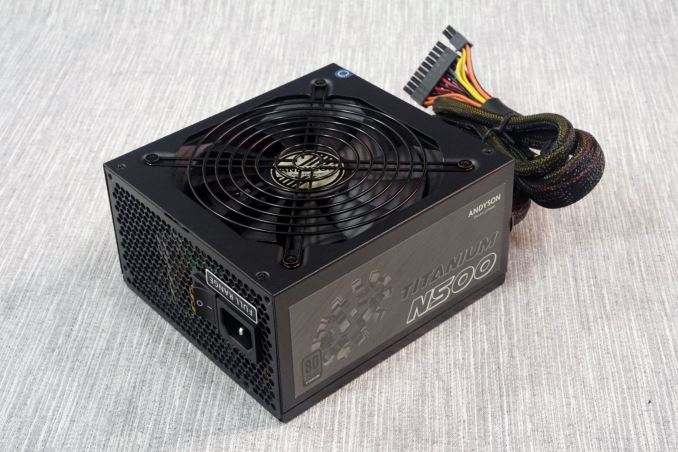
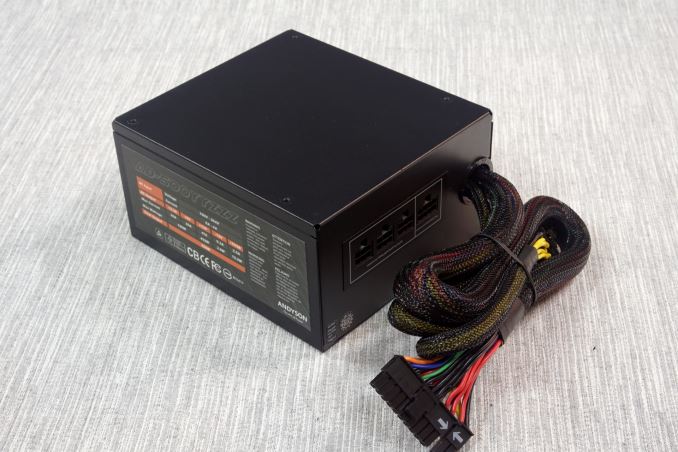

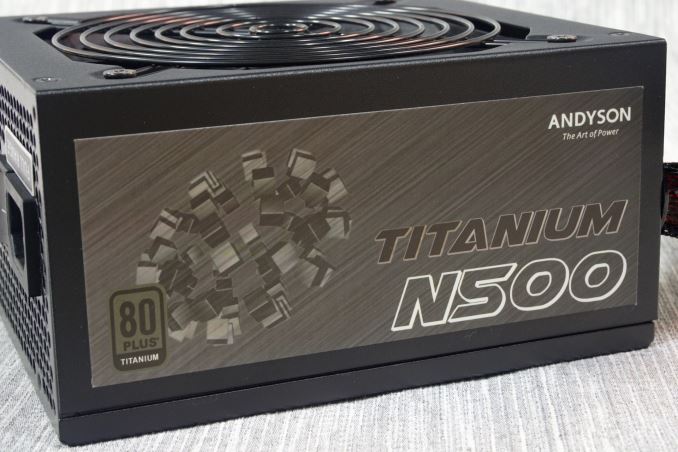
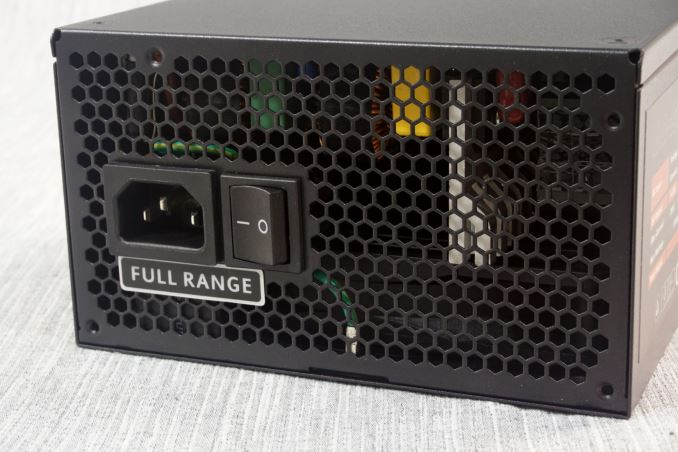
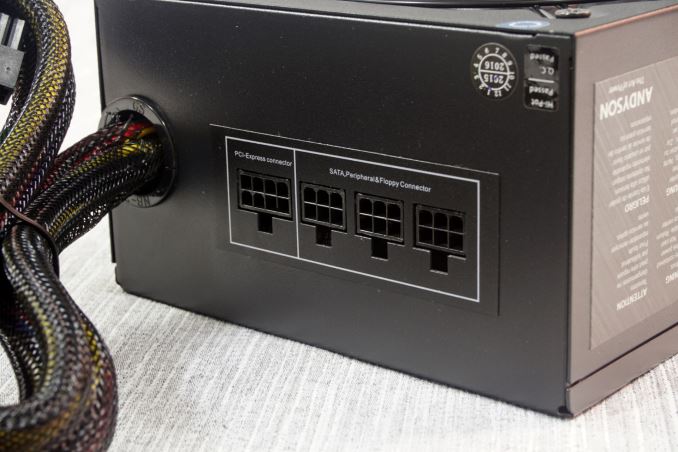
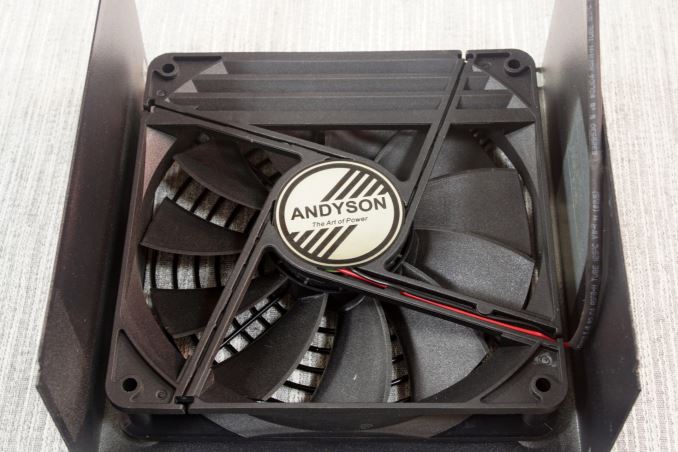
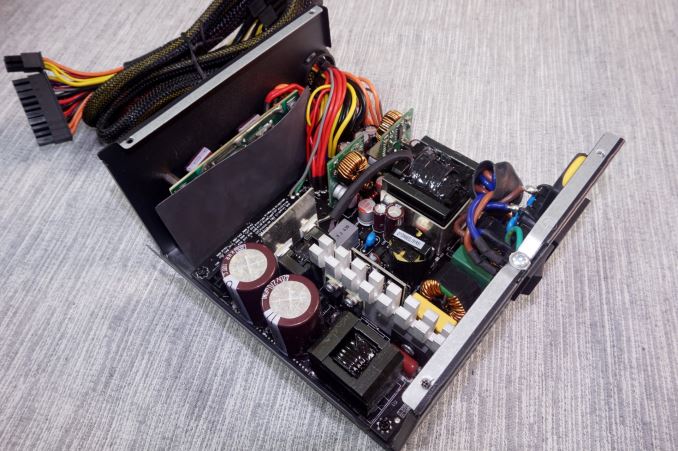
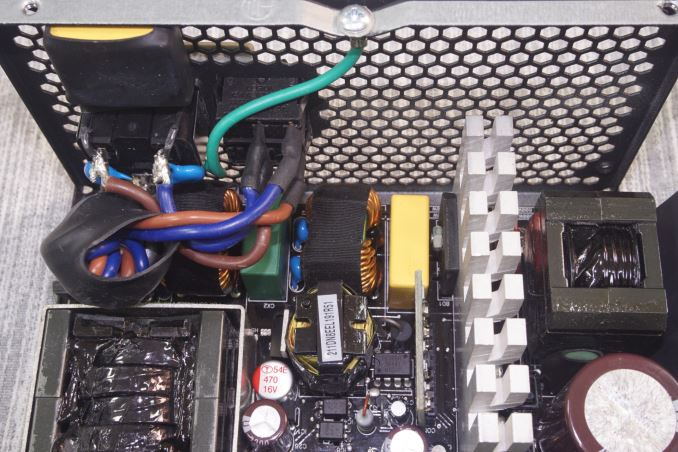















46 Comments
View All Comments
Murloc - Thursday, October 8, 2015 - link
what is 10% when the consumption is low?Also the 80plus certifications are created to take into account that the best efficiency is achieved at certain loads.
This is why they have certifications instead of a single efficiency number.
The consumer gets the information on efficiency synthetized in a single artificial indicator.
CaedenV - Thursday, October 8, 2015 - link
What, you are going to complain about 5w? On a 'normal' PSU you would be looking at 50-60% efficiency at such low loads.HOOfan 1 - Thursday, October 8, 2015 - link
Not sure what you mean by normal. No PSU worth buying on the market today is going to be that inefficient at 50W draw.80 Plus Titanium calls for 90% efficiency at 10% load, so at 50W, this unit should be 90% efficient. None of the other 80+ Certifications specify efficiency at 10% load.
Using Techpowerup, here are some numbers for 80 Plus Gold units.
Seasonic G550 84% efficient at 59W draw retails for $80
EVGA Supernova G2 650 84.77% efficient at 59W draw retails for $100
RussianSensation - Thursday, October 8, 2015 - link
I don't think you know how to reach charts.http://www.anandtech.com/show/9663/the-andyson-n50...
At 50W rating, the power efficiency is >90%.
It seems you also didn't even read the review:
"As expected, the efficiency of the N500 Titanium is astonishing. The unit reached a maximum conversion efficiency of 95.2% at 50% load and an average of 94.1% within the nominal load range (20% to 100% of the unit's capacity). Not only that, but the low load efficiency is comparatively excellent as well, with the N500 Titanium maintaining an energy conversion efficiency of 91.4% at 10% load and 84.6% at 5% load. An efficiency greater than 84% with a load of merely 27.5 Watts on a 500W unit is outstanding."
@ 10% load it's 91.4% to be precise.
Next time before trying to criticize a product, maybe you should actually read the review.
HOOfan 1 - Thursday, October 8, 2015 - link
Are you replying to me or Shadowmaster? I was correcting Shadowmaster when he said it was only 85% efficient at 44w by saying it was at least 90% efficient at 50w. Then I corrected Caedenv when he said other PSUs are only 50% efficient at that losd. So basically if you are refering to me then you just backed up what I already posted...DanNeely - Thursday, October 8, 2015 - link
Actually it is. At idle loads a 80+ Gold PSU would be about 75% efficient; Titanium is the first standard to set a 10% efficiency requirement at all. Squeezing a tenth of a watt of consumption out of fixed power components is much harder than trying to get a tenth of a percent improvement at high loads.DzanZeMan - Thursday, October 8, 2015 - link
Actually, 84.6% effeciency at 5% (27.5 watts) and 91.4% effeciency at 10%. details... details... amirite?RussianSensation - Thursday, October 8, 2015 - link
Exactly. The guy goes off criticizing the product when in the review's description and in the charts it's as clear as can be that at 10% load efficiency is at least 90%.ShieTar - Friday, October 9, 2015 - link
Almost "rite". Its a 500W unit, so 5% are 25W, not 27.5W.Nitpicking, I know ;-)
Samus - Friday, October 9, 2015 - link
Anything over 80% efficiency at <10% load is excellent.85% is unbelievable. As an electrical engineer I can't even wrap my head around how efficient that is. The analog ballasts and transformers I'm used to working with are usually around 70% efficient at idle\no load state. Even a Class 5 transformer to charge your phone saps around half a watt hour without a load, and since those devices are typically 3w, that's about 80% efficient and as good as consumer electronics often get.